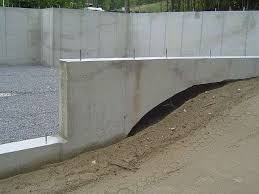How to Ensure a Dry Basement and Prevent Expensive Water Damage to your Home
By Mark J. Donovan
|
|
At some point in the life of most homes with a basement, water in the basement usually occurs. And when it does, there is water damage to the basement contents and the sudden growth of unhealthy mold and mildew. Wet basements, however, is not necessarily a foregone conclusion. By taking proper steps during the construction of the home wet basements can be avoided. For example, waterproofing your foundation walls should be a standard task done during the construction of your home.
Historically exterior foundation walls were sealed using tar, a rubberized liquid membrane, or some other similar type of foundation waterproofing product prior to backfilling around the foundation. |
The home builder trying to cut corners may however skip this step to save himself time and money.
If your basement becomes flooded or even leaks after a rain storm, then chances are that foundation waterproofing was not done or that a perimeter drain was not installed around the foundation footings.
However if the basement water problems are more severe, a foundation waterproofing sealer may need to be applied to all of the interior basement walls and floor and/or a sump pump installed.
| For severe basement water problems, the soil around the foundation walls may need to be temporarily removed and the exterior foundations walls sealed, and a perimeter drain installed. If a perimeter drain system is required, they can also be installed in the interior of the basement foundation walls, however a pump-up ejector tank is also required.
Interior perimeter drain systems require jack hammering up much of the concrete basement floor and installing a network of drainage pipes that funnel ground water underneath the home into the pump-up ejector storage tank where the water is then ejected from the home. |
 |
Besides foundation waterproofing to eliminate basement water leaks, it’s also important that gutters be installed and maintained properly around the home. In addition, soil around the foundation of the home should be graded and sloped so that roof run-off water drains away from the home.
For more help on Basement Additions, see HomeAdditionPlus.com’s Basement Remodeling Bid sheet. The Basement Remodeling Bid Sheet will help ensure that your hire the right contractor so that your basement remodeling project is done correctly and you get the project finished on time and budget.
Related Information
- How to Remove and Prevent Basement Mold
- How to Dry Out a Musty Smelling Basement
- How to Remove Basement Mold
Get Free Basement Waterproofing Price Quotes with No Obligation!
Fill out our 3-5 minute quick and easy form, and receive a free price quote on waterproofing from one of our prescreened and licensed waterproofing contractors. This process is free and there is no obligation to continue once you receive your waterproofing price estimate.

